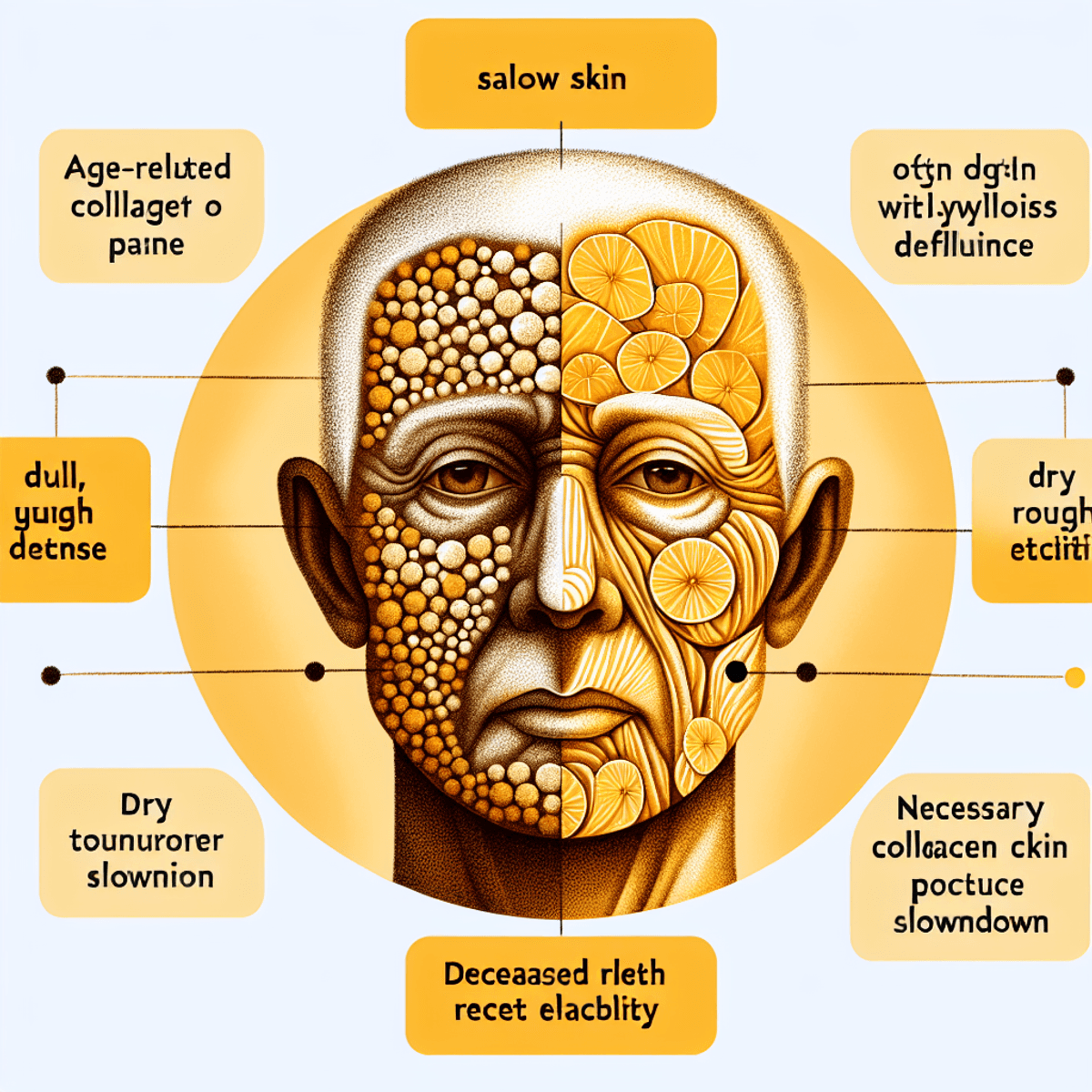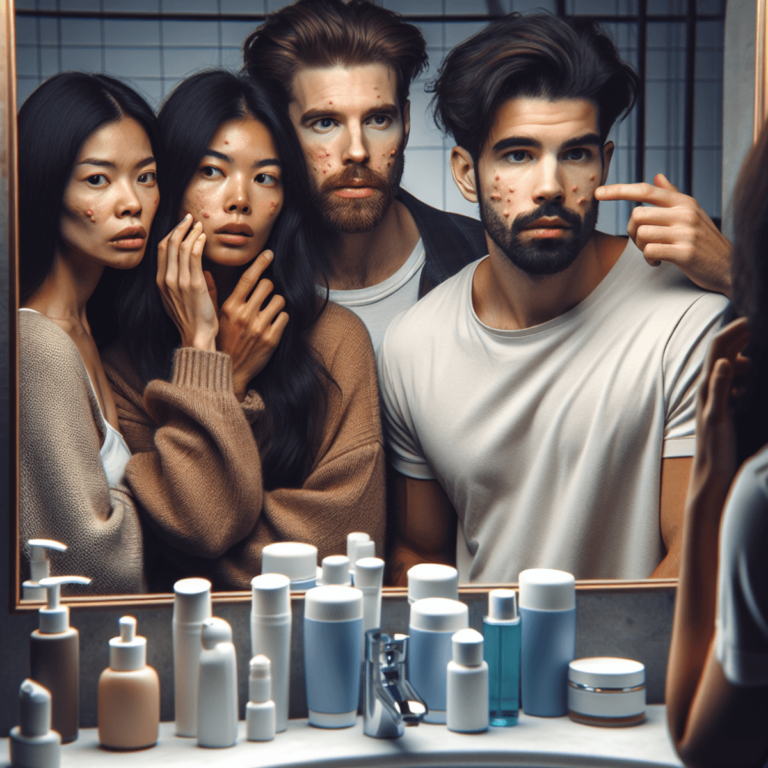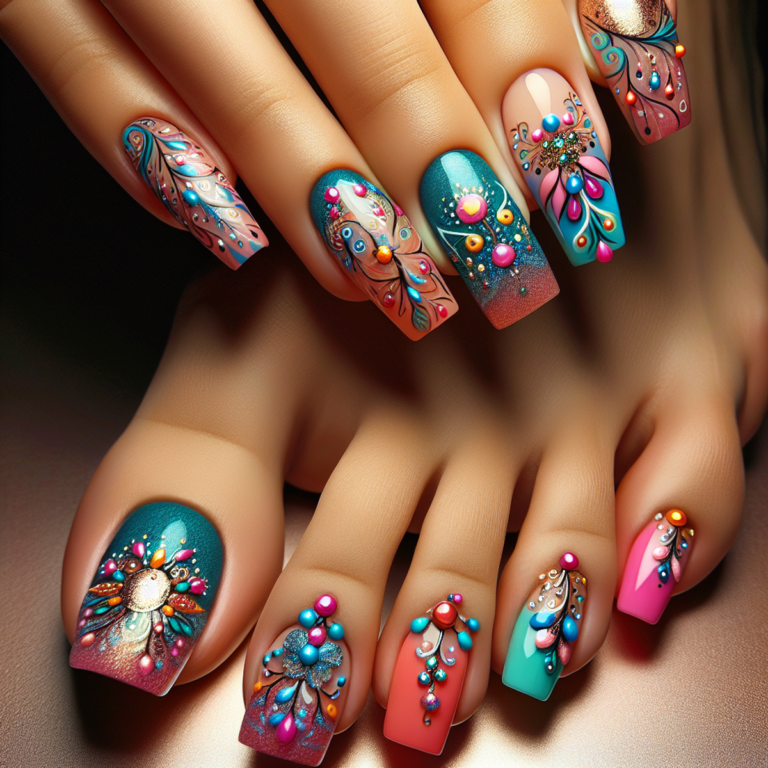What is sallow skin and what are the causes? Dermatologists explain

Understanding Sallow Skin
Your skin tells a story about your health, and sallow skin sends a clear message that something’s not quite right. Sallow skin appears dull, pale, and lifeless, often taking on a yellowish or brownish tinge that differs from your natural complexion.
You might notice these key characteristics of sallow skin:
- Loss of natural radiance and glow
- Uneven skin tone with yellow or brown undertones
- Dry, rough texture
- Reduced elasticity
- Lackluster appearance
Understanding sallow skin goes beyond cosmetic concerns – it’s a potential indicator of your body’s internal health. Your skin acts as a mirror, reflecting various factors from nutrition and hydration to underlying health conditions.
Recognizing sallow skin early allows you to take proactive steps in your skincare routine and make necessary lifestyle adjustments. By identifying the specific factors affecting your skin’s appearance, you can develop a targeted approach to restore your natural, healthy glow.
Causes of Sallow Skin
Your skin‘s appearance changes due to various factors, with sallow skin developing from both internal and external influences. Understanding these causes helps you identify the root of the problem and take appropriate action.
1. Aging
The natural aging process brings significant changes to your skin’s structure and appearance. As you age, your skin experiences:
- Collagen Production Decline: 1% decrease in collagen production each year after age 20, reduced skin firmness and elasticity, formation of fine lines and wrinkles
- Elastin Fiber Changes: decreased elastin protein production, reduced skin bounce-back ability, increased skin sagging
- Cell Turnover Slowdown: extended time for skin cell renewal, accumulation of dead skin cells, duller, less radiant appearance
Your skin‘s natural aging process affects its ability to maintain moisture and produce essential proteins. The dermis layer thins out, leading to:
- Reduced blood vessel efficiency
- Decreased nutrient delivery to skin cells
- Less oxygen circulation
- Diminished natural oil production
These changes create the characteristic yellowish or pale appearance associated with sallow skin. The skin’s structural proteins – collagen and elastin – play crucial roles in maintaining skin health:
Collagen: This protein provides structure and strength to your skin, keeping it firm and plump. The decline in collagen production leads to thinner skin texture, visible blood vessels, increased transparency, and loss of natural skin tone.
Elastin: This protein gives your skin its ability to snap back after stretching. Reduced elastin results in decreased skin resilience, slower recovery from facial expressions, permanent creases and folds, and compromised skin barrier function.
2. Sun Damage
Sun exposure plays a significant role in developing sallow skin through a process called photoaging. UV rays penetrate deep into your skin layers, breaking down essential proteins and triggering premature aging symptoms.
Key Effects of Sun Damage on Skin:
- Decreased melanin production leading to uneven skin tone
- Breakdown of collagen fibers causing skin to appear dull
- Formation of age spots and hyperpigmentation
- Reduced skin elasticity and firmness
- Compromised skin barrier function
Your skin‘s natural defense mechanisms become overwhelmed with repeated UV exposure. This damage accumulates over time, resulting in a yellowish, lackluster complexion characteristic of sallow skin.
Essential Sun Protection Strategies:
- Apply broad-spectrum SPF 30+ sunscreen daily
- Reapply sunscreen every 2 hours during sun exposure
- Wear protective clothing, including wide-brimmed hats
- Seek shade between 10 am and 4 pm
- Use UV-protective sunglasses to shield delicate eye areas
The skin‘s DNA repair mechanisms work best during nighttime hours. You can support this natural recovery process by incorporating antioxidant-rich products into your evening skincare routine, such as vitamin C serums or retinoids prescribed by dermatologists.
3. Poor Skincare Routine
Your daily skincare habits play a crucial role in preventing sallow skin. A lackluster routine can lead to dull, lifeless skin and accelerate the aging process.
Common Skincare Mistakes That Lead to Sallow Skin:
- Using harsh cleansers that strip natural oils
- Skipping moisturizer after cleansing
- Neglecting regular exfoliation
- Applying products in incorrect order
- Using water that’s too hot
- Failing to remove makeup before bed
Essential Steps for a Healthy Skincare Routine:
- Gentle Cleansing: Use pH-balanced cleansers suited to your skin type
- Regular Exfoliation: Remove dead skin cells 2-3 times weekly
- Proper Hydration: Apply moisturizer to damp skin
- Active Ingredients: Include vitamin C, retinol, or niacinamide
- Consistent Application: Maintain morning and evening routines
Your skin needs specific care at different times of day. Morning routines should focus on protection, while evening routines emphasize repair and regeneration. Patch test new products to avoid adverse reactions that can worsen skin appearance.
Remember to adjust your skincare routine seasonally – what works in summer might not be suitable for winter. Pay attention to your skin’s changing needs and adapt your routine accordingly.
4. Vitamin Deficiencies
Your skin‘s health is greatly influenced by essential vitamins. Not getting enough of certain vitamins can result in dull, lifeless skin and various other complexion problems.
Key Vitamins for Skin Health:
- Vitamin A: Supports skin cell turnover and repair
- Deficiency signs: rough, scaly patches and delayed wound healing
- Found in: sweet potatoes, carrots, spinach
- Vitamin C: Boosts collagen production and brightens skin
- Deficiency signs: slow healing, easy bruising, dry rough skin
- Found in: citrus fruits, strawberries, bell peppers
- Vitamin D: Promotes skin cell growth and repair
- Deficiency signs: sallow complexion, uneven skin tone
- Sources: sunlight exposure, fatty fish, fortified foods
- Vitamin E: Protects against free radical damage
- Deficiency signs: premature aging, dull skin texture
- Found in: nuts, seeds, avocados
Signs of Vitamin Deficiency in Your Skin:
- Persistent dry patches
- Uneven skin tone
- Delayed wound healing
- Increased sensitivity to sunlight
- Rough, scaly texture
Your body needs proper nutrient absorption to maintain healthy skin. Poor absorption can result from digestive issues, certain medications, or dietary restrictions. A blood test from your healthcare provider can identify specific vitamin deficiencies affecting your skin’s appearance.
5. Dehydration
Your skin‘s hydration level plays a critical role in maintaining its natural glow and vitality. When your body lacks proper hydration, your skin becomes one of the first organs to display visible signs of water deficiency.
- Tight, uncomfortable sensation
- Increased sensitivity
- Dull, lackluster appearance
- Fine lines becoming more pronounced
- Rough, flaky texture
It’s important to note that dehydrated skin differs from dry skin – it’s a temporary condition caused by insufficient water content rather than a lack of natural oils. Your skin needs adequate hydration to maintain its protective barrier function and natural cell turnover process.
Water intake directly impacts your skin’s ability to flush out toxins and maintain proper blood flow. When you’re dehydrated, blood flow to your skin decreases, leading to that characteristic sallow appearance.
Daily Hydration Requirements:
- Drink 8-10 glasses of water
- Include water-rich foods in your diet
- Limit caffeine and alcohol consumption
- Use humidifiers in dry environments
- Apply hydrating skincare products while skin is damp
The skin’s water content significantly affects its elasticity and resilience. Research shows that proper hydration can improve skin thickness and density, helping maintain a plump, healthy appearance. Dehydrated skin becomes more susceptible to environmental damage and premature aging signs, making adequate hydration essential for maintaining skin health.
6. Anemia
Anemia can have a noticeable effect on the appearance of your skin, causing a distinct change in complexion. This blood disorder, characterized by low hemoglobin levels, reduces oxygen delivery to skin cells, resulting in a pale, yellowish tone – a hallmark of sallow skin.
Key signs of anemia-related sallow skin:
- Pale or yellowish undertones
- Uneven skin texture
- Dull, lifeless appearance
- Dark circles under eyes
- Dry, flaky patches
Iron deficiency anemia affects your skin’s natural glow through multiple pathways:
- Decreased oxygen supply to skin cells
- Reduced production of collagen
- Impaired skin cell regeneration
- Compromised blood circulation
Addressing anemia for better skin health:
- Regular iron-rich foods:
- Red meat
- Leafy greens
- Legumes
- Fortified cereals
- Vitamin C-rich foods to enhance iron absorption:
- Citrus fruits
- Bell peppers
- Strawberries
- Broccoli
Blood tests can confirm iron deficiency anemia, allowing your healthcare provider to recommend appropriate supplements or treatments. Many people notice significant improvements in their skin’s appearance within weeks of starting iron supplementation under medical supervision.
7. Lifestyle Factors: Smoking, Stress, Diet, and Genetics
Your daily habits and genetic makeup play crucial roles in determining your skin’s appearance. Let’s examine these key factors that contribute to sallow skin:
1. Smoking Effects on Skin Health
- Cigarette smoke constricts blood vessels, reducing oxygen flow to skin cells
- Nicotine breaks down collagen and elastin fibers
- Free radicals from tobacco accelerate skin aging
- Smokers often develop a characteristic yellow-gray skin tone
- Each cigarette damages skin DNA, leading to premature aging
2. Stress Impact on Complexion
- Chronic stress triggers cortisol production
- High cortisol levels decrease skin barrier function
- Stress-induced inflammation causes skin dullness
- Poor sleep quality from stress affects skin renewal
- Mental health challenges can manifest as skin problems
3. Dietary Influences
- Processed foods contribute to skin inflammation
- Sugar consumption leads to collagen breakdown
- Essential nutrients for healthy skin:
- Omega-3 fatty acids
- Antioxidant-rich fruits
- Leafy green vegetables
- Lean proteins
- Zinc-rich foods
4. Genetic Factors
- DNA determines:
- Natural skin tone
- Melanin production
- Collagen synthesis rate
- Skin barrier strength
- Hereditary conditions affecting skin:
- Hyperpigmentation tendencies
- Natural oil production levels
- Skin thickness variations
- Blood vessel visibility
5. Combined Effects
These factors often work together, creating a compounded impact on skin appearance. A person with genetic predisposition to sallow skin might experience more severe effects from smoking or poor diet. Understanding your unique combination of lifestyle and genetic factors helps create targeted solutions for skin health improvement.
Your skin responds to both internal and external factors. While you can’t change your genetic makeup, you can modify lifestyle choices to support optimal skin health. Making positive changes in smoking habits, stress management, and dietary choices creates visible improvements in skin vitality.
Prevention Strategies for Sallow Skin
Preventing sallow skin requires a multi-faceted approach focused on nourishment and protection. Your daily choices play a crucial role in maintaining skin vitality and preventing that dull, yellowish appearance.
1. Balanced Diet and Hydration Practices
A nutrient-rich diet serves as your skin’s first line of defense against sallowness. Your plate should include:
Skin-Boosting Foods
- Colorful fruits: Berries, oranges, and pomegranates packed with antioxidants
- Leafy greens: Spinach, kale, and Swiss chard rich in vitamins A and C
- Healthy fats: Avocados, nuts, and fatty fish containing omega-3s
- Lean proteins: Fish, eggs, and legumes for collagen production
- Beta-carotene sources: Sweet potatoes, carrots, and pumpkin
Hydration Guidelines
- Drink 8-10 glasses of water daily
- Set hourly reminders to maintain consistent water intake
- Track your hydration using smartphone apps
- Include hydrating foods like cucumber, watermelon, and celery
- Replace sugary drinks with herbal teas or infused water
Pro Tips for Maximum Hydration
- Start your day with a glass of water
- Keep a reusable water bottle at your desk
- Drink water before, during, and after exercise
- Increase intake during hot weather or air-conditioned environments
- Monitor urine color – pale yellow indicates proper hydration
Skin-Damaging Foods to Avoid
- Processed sugars
- Excessive salt
- Refined carbohydrates
- Alcohol
- Caffeine in large quantities
Your skin reflects your internal health. A balanced diet rich in vitamins, minerals, and antioxidants supports cellular repair and promotes a healthy glow. Proper hydration maintains skin elasticity and helps flush out toxins that contribute to sallow appearance.
Remember to eat a rainbow of fruits and vegetables daily – each color provides different nutrients essential for skin health. Combine this with consistent water intake throughout the day rather than drinking large amounts at once.
2. Consistent Skincare Routine with Cleansing, Exfoliating, Moisturizing, and Sun Protection Techniques
A well-structured skincare routine serves as your defense against sallow skin. Your daily regimen needs to include these essential steps:
1. Cleansing
- Use a gentle, pH-balanced cleanser twice daily
- Remove makeup, dirt, and excess oil without stripping your skin
- Choose sulfate-free formulas for sensitive skin
- Lukewarm water works best – hot water can damage your skin barrier
2. Exfoliation
- Limit to 2-3 times per week
- Choose between:
- Chemical exfoliants (AHAs/BHAs)
- Physical scrubs (gentle, non-abrasive)
- Start slowly to avoid irritation
- Never exfoliate irritated or broken skin
3. Moisturizing
- Apply to slightly damp skin
- Select based on your skin type:
- Dry skin: Rich creams with ceramides
- Oily skin: Lightweight, oil-free formulas
- Combination skin: Gel-cream hybrids
- Look for ingredients like:
- Hyaluronic acid
- Glycerin
- Peptides
- Niacinamide
4. Sun Protection
- Apply SPF 30+ daily
- Reapply every 2 hours when outdoors
- Use broad-spectrum protection
- Consider physical sunscreens for sensitive skin
Your skin type determines the products you need. Dry skin benefits from cream-based products, while oily skin responds better to gel formulations. Sensitive skin requires fragrance-free, hypoallergenic options.
Watch for signs your routine isn’t working:
- Increased sensitivity
- Breakouts
- Redness
- Flaking
- Tightness
Adjust your routine seasonally – skin needs more hydration in winter and lighter products in summer. A consistent routine brings results within 4-6 weeks of regular use.
3. Lifestyle Changes: Exercise, Sleep, and Stress Management
Your daily habits are crucial for keeping your skin healthy and vibrant. Here are some lifestyle changes you can make to improve your skin:
Exercise Regularly
Exercise increases blood flow throughout your body, delivering essential nutrients and oxygen to skin cells. A 30-minute workout session – whether it’s jogging, swimming, or yoga – stimulates natural oils production and promotes a healthy glow.
Benefits of Exercise for Your Skin:
- Improved blood circulation to facial tissues
- Enhanced collagen production
- Better toxin removal through sweating
- Reduced cortisol levels
- Increased endorphin release for natural radiance
Get Quality Sleep
Quality sleep serves as your skin’s natural restoration period. During deep sleep, your body repairs damaged cells and produces new collagen. Aim for 7-9 hours of uninterrupted sleep each night.
Tips for Better Sleep Hygiene:
- Maintain a consistent sleep schedule
- Use silk pillowcases to prevent friction
- Keep your bedroom cool and dark
- Avoid screens 1 hour before bedtime
- Sleep on your back to prevent facial compression
Manage Stress Effectively
Stress management directly impacts your skin‘s appearance. High stress levels trigger hormonal imbalances that can lead to dull, sallow complexion.
Techniques for Stress Management:
- Practice daily meditation or deep breathing
- Try progressive muscle relaxation
- Engage in regular mindfulness activities
- Schedule regular massage sessions
- Set boundaries in work and personal life
Creating a balanced lifestyle with proper exercise, sleep, and stress management forms the foundation for maintaining healthy, glowing skin. These habits work together with your skincare routine to prevent and improve sallow skin appearance.
When to Seek Professional Help for Sallow Skin Issues?
Consulting a dermatologist becomes essential when your sallow skin persists despite implementing lifestyle changes and maintaining a consistent skincare routine. Here are specific signs that indicate you need professional evaluation:
Red Flag Symptoms:
- Sudden changes in skin color or texture
- Persistent yellowish tinge that doesn’t improve with hydration
- Visible blood vessels or broken capillaries
- Unexplained patches or discoloration
- Skin that feels unusually thin or papery
Professional Treatment Options:
- Chemical peels to remove damaged skin layers
- LED light therapy for skin rejuvenation
- Prescription-strength retinoids
- Customized vitamin infusion treatments
- Professional-grade skincare products
A dermatologist can perform specialized tests to identify underlying health conditions contributing to your sallow complexion. These may include:
- Blood tests for vitamin deficiencies
- Hormone level assessments
- Liver function tests
- Iron level measurements
- Thyroid function evaluation
Treatment Benefits:
- Targeted solutions for specific skin concerns
- Professional guidance on product selection
- Early detection of potential health issues
- Customized treatment plans
- Regular monitoring of skin changes
You should schedule an appointment if you notice your skin doesn’t respond to over-the-counter products within 8-12 weeks. Dermatologists can also address related concerns like post-inflammatory marks and uneven skin tone through specialized treatments such as laser therapy or microneedling.
Remember to document any changes in your skin’s appearance and keep track of treatments you’ve already tried. This information helps dermatologists create an effective treatment strategy tailored to your specific needs.
Conclusion
Sallow skin is a sign of underlying health issues that need your attention. By understanding the causes – such as aging, sun damage, vitamin deficiencies, and lifestyle factors – you can take proactive measures to restore your skin’s natural glow. This includes following a proper skincare routine, eating a balanced diet, staying hydrated, and making healthy lifestyle choices.
Remember: your skin reflects your overall health. By implementing the prevention strategies discussed and being aware of any warning signs, you can effectively address sallow skin concerns. If necessary, don’t hesitate to seek advice from a dermatologist – their expertise can greatly impact your journey towards healthier skin.
FAQs (Frequently Asked Questions)
What is sallow skin?
Sallow skin is characterized by a yellowish or pale complexion that can appear dull and lifeless. It often indicates underlying health issues or deficiencies in essential nutrients.
What are the main causes of sallow skin?
The primary causes of sallow skin include aging, sun damage, poor skincare routines, vitamin deficiencies, and dehydration. Each of these factors can contribute to a lackluster appearance and overall skin health.
How does aging affect sallow skin?
As we age, the production of collagen and elastin decreases, leading to loss of elasticity and firmness in the skin. This can result in a sallow appearance as the skin becomes thinner and less vibrant.
What role does sun damage play in developing sallow skin?
Prolonged exposure to UV rays can lead to photoaging, which damages the skin’s texture and tone, contributing to a sallow complexion. Preventive measures like using sunscreen can help protect against this damage.
How can I improve my skincare routine to prevent sallow skin?
A proper skincare routine is crucial for maintaining healthy skin. This includes regular cleansing, moisturizing, exfoliating, and ensuring adequate hydration. Avoiding common mistakes like skipping sunscreen or using harsh products can also help.
What vitamins are important for maintaining a vibrant complexion?
Vitamins A, C, D, and E play essential roles in maintaining healthy skin. A deficiency in these vitamins can lead to dullness and signs of sallow skin. Incorporating nutrient-rich foods into your diet can support better skin health.










